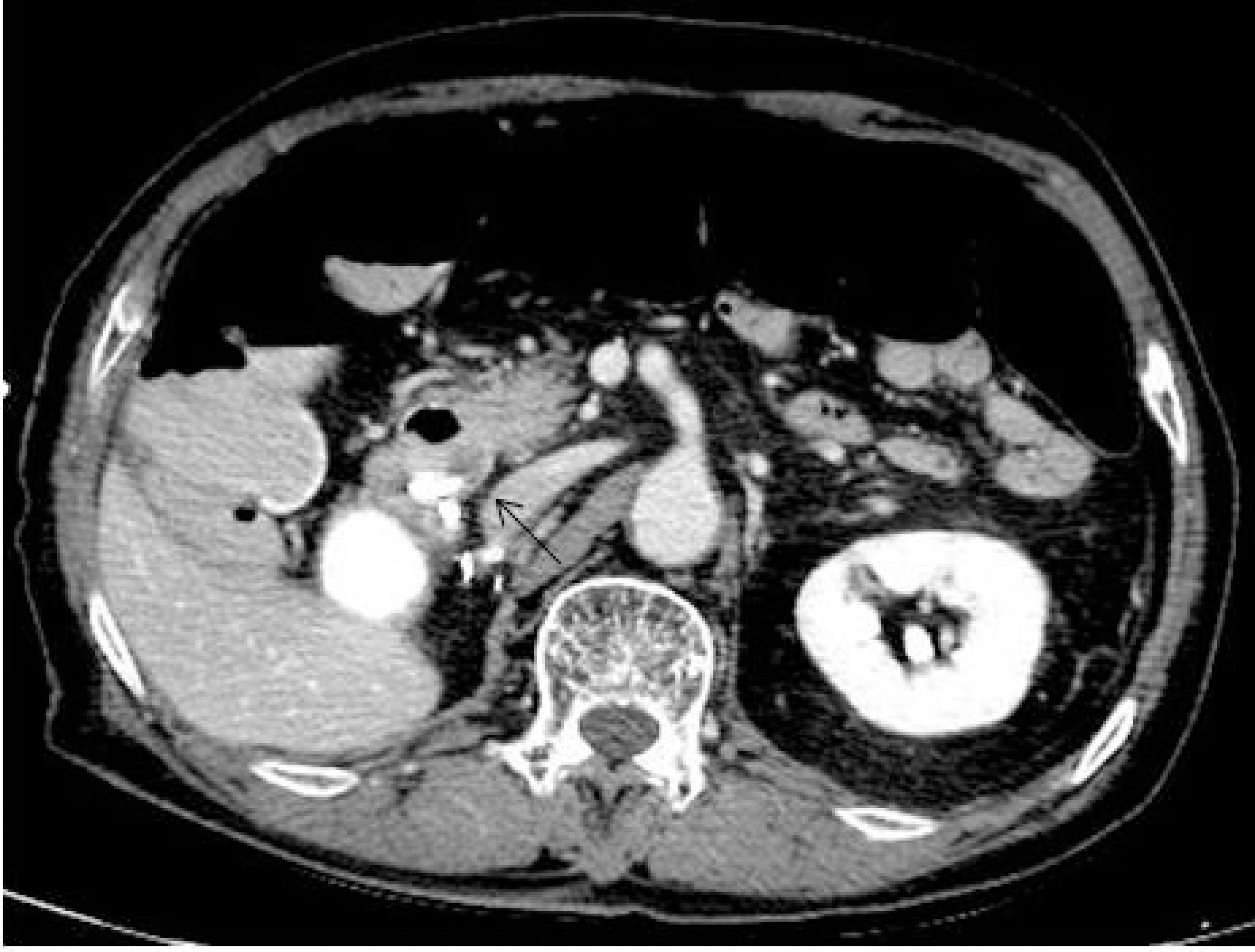Articles
- Page Path
- HOME > Kosin Med J > Volume 31(2); 2016 > Article
-
Case Report
Endoscopic Removal of Remained Drawstring After Percutaneous Transhepatic Biliary Drainage - Tae Wook Yoon, Geun Yong Jung, Young Jun Park, Jun Young Choi, Jee Hwan Jung, Tae Gyoon Kim
-
Kosin Medical Journal 2016;31(2):173-178.
DOI: https://doi.org/10.7180/kmj.2016.31.2.173
Published online: January 20, 2016
Department of Internal Medicine, VHM Medical center, Seoul, Korea
- Corresponding Author: Tae Gyoon Kim, Department of Internal Medicine, VHM Medical center, 53, Jihwangdo-ro 61-gil, Gangdong-gu, Seoul 05368, Korea Tel: +82-2-2225-1114 Fax: +82-2-2225-4374 Email: gyoondle@hanmail.net
• Received: June 23, 2015 • Accepted: September 16, 2015
Copyright © 2016 Kosin University School of Medicine Proceedings
This is an Open Access article distributed under the terms of the Creative Commons Attribution Non-Commercial License (http://creativecommons.org/licenses/by-nc/3.0) which permits unrestricted non-commercial use, distribution, and reproduction in any medium, provided the original work is properly cited.
- 829 Views
- 2 Download
Abstract
- The percutaneous transhepatic biliary drainage (PTBD) is an effective intervention as a palliative therapy for relieving a jaundice and cholangitis. It may be used in place of Endoscopic retrograde cholangiopancreatography (ERCP) in the obstructive biliary disease. Recently, by developing invasive procedures, the incidence of the complications such as bleeding and perforation has been increasing in the diagnosis and treatment of hepatobiliary disease. We report here on a case of remained drawstring after PTBD in a 85-year-old man. The patient was conducted PTBD for relieving a jaundice and cholangitis. And then the patient had complained of abdominal pain constantly. A few days later, we removed PTBD and attempted ERCP for removal of CBD stone. The ERCP showed remained drawstring around ampulla of vater and we removed it by IT knife. The drawstring was successfully removed.
Fig. 1.Black arrow in abdomen CT demonstrating 9mm sized biliary stone in the distal common bile duct.


Fig. 2–1.Endoscopy showed an ampulla of vater tightened by a remained drawstring after removing percutaneous transhepatic biliary drainage. Fig. 2–2. Endoscopy showed an ampulla of vater after removing a remained drawstring. Fig. 2–3. The remained drawstring to prevent a drainage tube from falling into the body.


- 1. Nennstiel S, Weber A, Frick G, Haller B, Meining A, Schmid RM, et al. Drainage-related Complications in Percutaneous Transhepatic Biliary Drainage: An Analysis Over 10 Years. J Clin Gastroenterol 2014.
- 2. Oh HC, Lee SK, Lee TY, Kwon S, Lee SS, Seo DW, et al. Analysis of percutaneous transhepatic cholangioscopy-related complications and the risk factors for those complications. Endoscopy 2007;39:731–6.ArticlePubMed
- 3. Enochsson L, Swahn F, Arnelo U, Nilsson M, Löhr M, Persson G. Nationwide, population-based data from 11,074 ERCP procedures from the Swedish Registry for Gallstone Surgery and ERCP. Gastrointestinal Endoscopy 2010;72:1175–84.ArticlePubMed
- 4. Eickhoff A, Schilling D, Jakobs R, Weickert U, Hartmann D, Eickhoff JC, et al. Long-term outcome of percutaneous transhepatic drainage for benign bile duct stenoses. Rocz Akad Med Bialymst 2005;50:155–60.PubMed
- 5. Nikola Y, Kolev , Valentin L, Ignatov , Tonev Anton Y., Zlatorov Aleksanmdar K., Encheva Elitsa P., Kirilova Tanya N., et al. BILIARY DRAINAGE. Journal of IMAB–Annual Proceeding (Scientific Papers) 2013;19:465–9.Article
- 6. Günther R, Schild H, Thelen M. Review article: percutaneous transhepatic biliary drainage: experience with 311 procedures. Cardiovasc Intervent Radiol 1988;11:65–71.ArticlePubMed
- 7. Mayumi T, Someya K, Ootubo H, Takama T, Kido T, Kamezaki F, et al. Progression of Tokyo Guidelines and Japanese Guidelines for management of acute cholangitis and cholecystitis. J UOEH 2013;35:249–57.ArticlePubMed
- 8. Lee TH, Park SH, Lee SH, Lee CK, Lee SH, Chung IK, et al. Modified rendezvous intrahepatic bile duct cannulation technique to pass a PTBD catheter in ERCP. World J Gastroenterol 2010;16:5388.ArticlePubMedPMC
- 9. Kühn JP, Busemann A, Lerch MM, Heidecke CD, Hosten N, Puls R. Percutaneous biliary drainage in patients with nondilated intrahepatic bile ducts compared with patients with dilated intrahepatic bile ducts. AJR Am J Roentgenol 2010;195:851–7.ArticlePubMed
- 10. Oberholzer K, Pitton M, Mildenberger P, Lechner C, Düber C, Thelen M. [The current value of percutaneous transhepatic biliary drainage]. RoFo 2002;174:1081–8.PubMed
References
Figure & Data
References
Citations
Citations to this article as recorded by 


 KOSIN UNIVERSITY COLLEGE OF MEDICINE
KOSIN UNIVERSITY COLLEGE OF MEDICINE

 PubReader
PubReader ePub Link
ePub Link Cite
Cite



